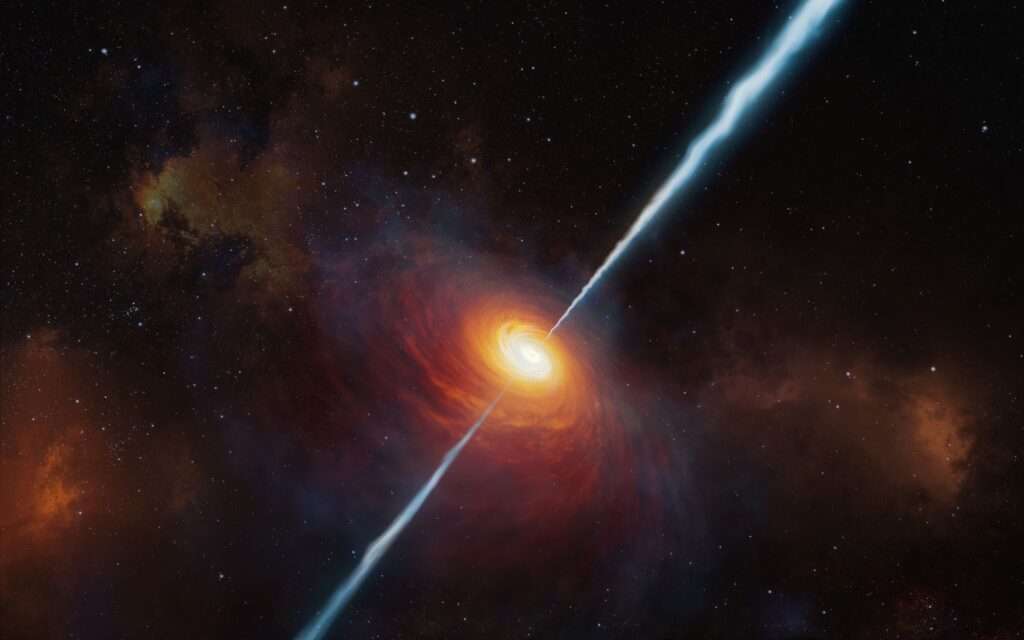June 10, Washington, D.C. – In a rare and significant cosmic event, astronomers have detected a black hole located approximately 11.6 billion light-years from Earth, releasing a high-powered jet that is being illuminated by the universe’s oldest light — the cosmic microwave background (CMB), the faint radiation left over from the Big Bang.
The black hole, which is believed to be part of a distant quasar, was observed through a collaborative effort involving NASA’s Chandra X-ray Observatory, ALMA (Atacama Large Millimeter/submillimeter Array) in Chile, and the Karl G. Jansky Very Large Array in New Mexico. The object lies in the early universe, just a couple of billion years after the Big Bang, offering scientists a rare glimpse into ancient cosmic activity.
What makes this discovery extraordinary is not just the presence of the jet — which consists of high-energy particles moving close to the speed of light — but the fact that it is being illuminated by the CMB. Normally, such jets are visible due to interactions with surrounding gas or dust. In this case, however, the leftover radiation from the early universe is energizing particles in the jet, causing them to emit X-rays detectable from Earth.
Dr. Aneta Siemiginowska, an astrophysicist involved in the study, explained that the CMB acts like a natural cosmic spotlight. “This background glow is boosting the visibility of the jet, which allows us to study the black hole’s properties and its environment in a way we normally can’t at such extreme distances,” she said.
The jet is estimated to stretch more than 160,000 light-years, making it one of the largest of its kind observed from such an early period in the universe. Its visibility in X-ray wavelengths provides crucial data about the behavior and impact of supermassive black holes during the universe’s formative years.
This finding supports theories that black holes were not only active but played a central role in shaping early galaxies and influencing the large-scale structure of the universe. The discovery also highlights how ancient cosmic phenomena like the CMB continue to provide valuable tools for modern-day astronomy.
With continued advancements in telescope technology and data analysis, astronomers expect to identify more such distant jets, shedding light on the infancy of the cosmos and the evolution of some of its most powerful objects.



